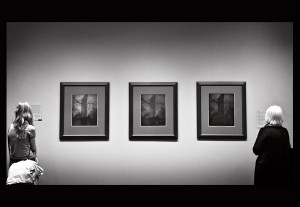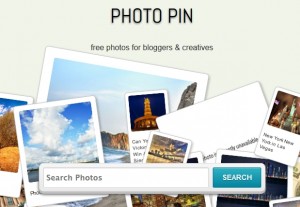 Thunderbolt Digital is a Surrey-based digital agency specialising in web design, graphic design, SEO, copywriting and online marketing. We’ve helped clients from the Surrey County Council to a local PR agency. In this series of blog posts we’ll be sharing some top tips for making your online marketing activities stress-free. The web is getting increasingly visual. For your blog post to catch attention (or for it to be pinnable or broken up by something other than titles and words) images of some sort are a must these days. Many blogging tools and content management systems almost expect you to have a featured image and using them allows you to create a livelier blog.
Thunderbolt Digital is a Surrey-based digital agency specialising in web design, graphic design, SEO, copywriting and online marketing. We’ve helped clients from the Surrey County Council to a local PR agency. In this series of blog posts we’ll be sharing some top tips for making your online marketing activities stress-free. The web is getting increasingly visual. For your blog post to catch attention (or for it to be pinnable or broken up by something other than titles and words) images of some sort are a must these days. Many blogging tools and content management systems almost expect you to have a featured image and using them allows you to create a livelier blog.
If a picture is online, I can use it, right?
Wrong. Unless detailed otherwise, all photos, illustrations, Instagram shots, cartoons, logos and web graphics are subject to copyright. If you do a Google image search and just pick out what you like for your business blog or website, you might get in trouble. We know of a case where a popular stock image company chased down its images to a corporate website and issued heavy fines for illegal use of their stock photos even though the photos had been manipulated and were no longer identical to the originals. As a private individual, the risk of stealing an image is a personal one. If you use an image without permission in your personal blog you may get fined but at least you won’t get your company in trouble. When using social media and sharing other people’s photos and memes designed to go viral, you’re fine as long as you are sharing the originally uploaded image using social tools such as Facebook and Twitter – but the problem is that sometimes the person who originally uploaded the image didn’t have permission to do so. Business blogging is different. You really shouldn’t be gambling with your company’s money or reputation. We’ll show you how to get legal images for your blog.
So what are my options?
You have a number of options and a combination of these approaches may be good, depending on the nature of your business. If you need images for commercial purposes other than blogging, creating them yourself and getting a photographer or a graphic designer are usually better options than using stock photos “as is”. It is also possible to purchase exclusive rights to an image. For any kind of branding and identity original and exclusive is best. Blogging can be a different issue – you’ll need to blog regularly and about a range of topics. Finding images on a continuous basis can become a real chore.
- Pay for royalty-free images (Getty Images, Shutterstock, iStockphoto etc.)
- There are some choices such as getting a subscription-based service to a royalty-free stock photo service, too
- Take your own photos and create your own graphics (this can be a great option, especially if you sell consumer goods)
- Obtain photos from your users (via user submissions, social media contests, etc.)
- Use free images with a Creative Commons License
- Images in the public domain (expired or no copyright; attribution might still be good form)
Creative Commons License
Creative Commons licenses give creators the tools to make a choice about copyright. As a creator of original content you still retain the copyright but can allow others to use your content in a way you detail under the license types available. The license types are:
- Attribution
- Attribution-ShareAlike
- Attribution-NoDerivs
- Attribution-NonCommercial
- Attribution-NonCommercial-ShareAlike
- Attribution-NonCommercial-NoDerivs
As a business blogger, you’ll need to find works that allow commercial use, so the first and third license types are particularly interesting. If you don’t mind people sharing the content again under same terms, the second license is appropriate, too.
 So where do I find this free content?
So where do I find this free content?
Well, you can use the search page Creative Commons has put together – but be warned, it is not a search engine and just offers a convenient landing page with popular sources listed. This means you might end up with images that aren’t actually licensed under CC and it is your responsibility to verify that the works are licensed in such a way. There are other tools which give you more direct access to photographs that can be used straight away. Photopin searches Flickr for CC-licensed images. The search results also contain some images from stock photo companies so just take a look at the preview and see what you’re getting. Then check the type of license offered and if it matches with your intended use, grab away! Wylio is another interesting CC search tool although it does require you to link your Google account to them and create an area where your images will be stored. It is also still your total responsibility to check the type of licensing on offer and that the images you take aren’t used in ways that are not allowed. Similarly to Photopin, some stock photo sites such as Stockfreeimages rely on you getting tempted by the paid photos on offer enough to offer a free service on the side. It’s definitely worth checking these out. If you need historical or factual photos in the public domain, head straight to Every Stock Photo – a site that offers millions of free photos for your use. Another great source for free factual, scientific or academic images is Wikimedia Commons – again, check the individual licenses and how they should be attributed. You do not have to obtain permission before using but you will need to attribute what you use correctly. We hope this helps – and if you’ve enjoyed the article, please share it with others! Happy blogging! If you are looking for web design, graphic design or help with your online marketing, give us a call on 01252 413757 – we are a full-service digital agency in Surrey, based in the Georgian market town of Farnham and love to help local businesses thrive. Photo credit: anjan58
